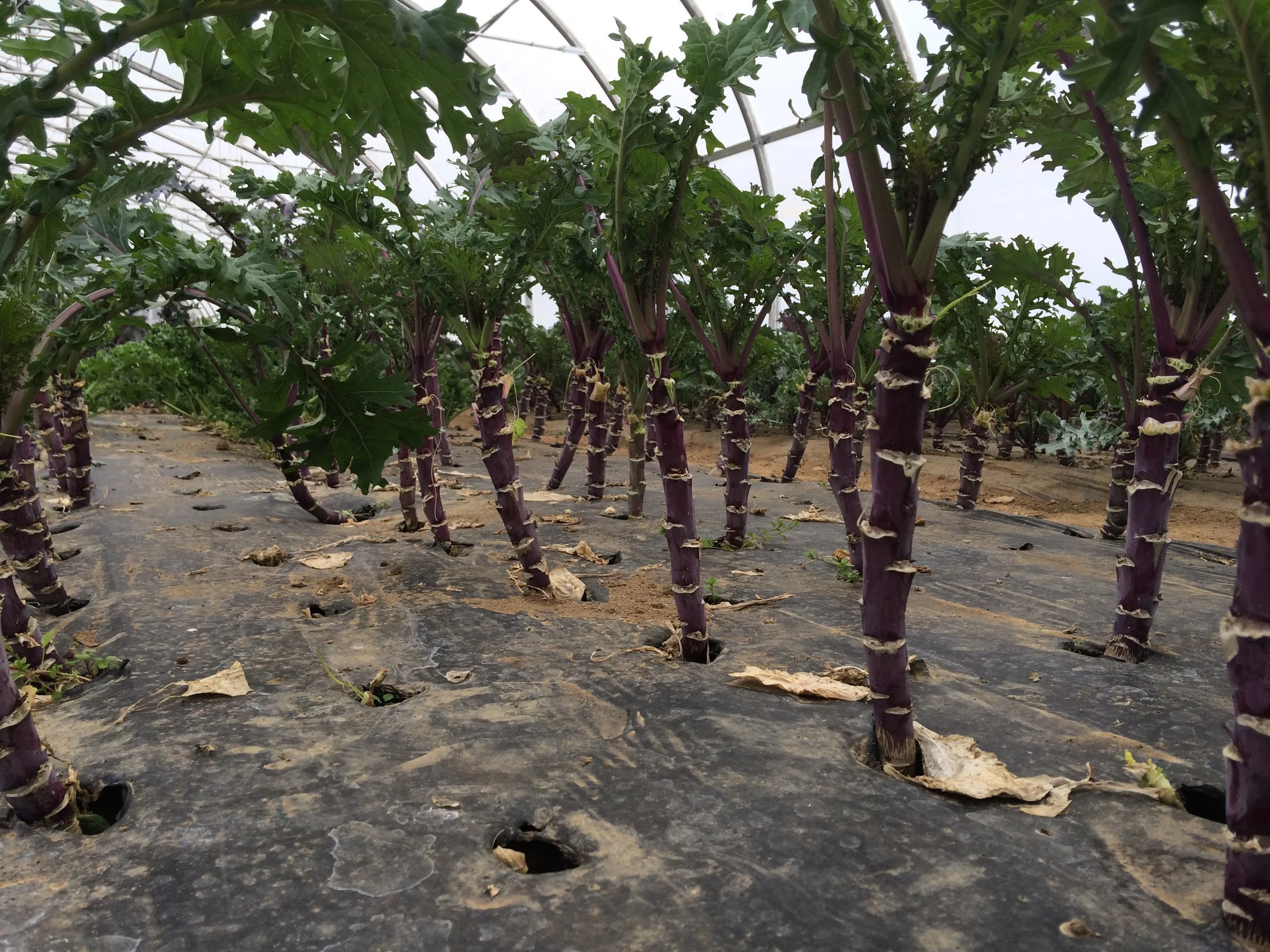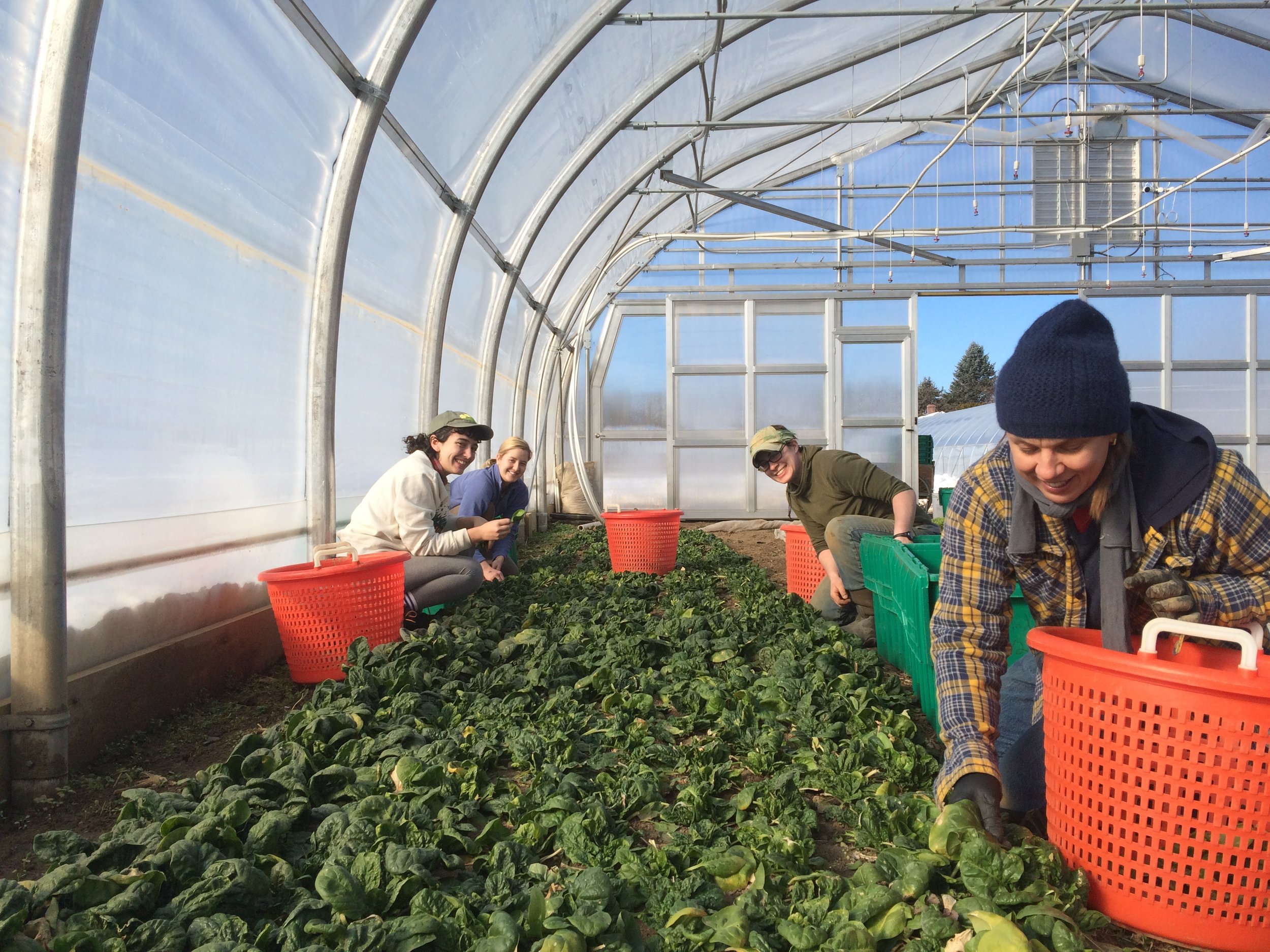Grower’s Row: Successions, Seasonality, and Winter Produce Patterns
Patrick Lang
The second harvest of one of our spinach beds
The farm crew is still happily harvesting, maintaining, and planting (again!) in the now iconic high tunnels that have allowed us to enjoy the growing season all winter long. We saw plenty of kale and mustard greens in December, and salad mix and spinach in January, followed by chard and Asian greens in February. The proportion of storage crops (roots, winter squash) to greens has also varied throughout the winter.
Considering this, have you wondered how and why various items make it to distribution at given times? It is in fact a little less obvious in the winter than during the regular growing season.
First of all, since this is the first time anything has been grown in the new structures at PFP, some of the details amounted to an experiment this winter. Part of the plan for a well-rounded supply of winter greens is multiple successions so that tender mustard and salad greens (for example) can be harvested all winter. This is done by planting multiple beds at different times; thus the plants mature at different times. This fall, very warm and sunny weather caused most of the mustard greens to mature around the same time, however, gently indicating that in the future the successions should be planted with even greater delays (this fast growth is why such a large amount of mustards was distributed early this winter!). Multiple successions of salad mix were also planted, but due again to the effect of a very warm fall, the distribution of baby lettuces hasn't been completely consistent.
Along with the concept of multiple successions, seasonality is essential in determining what can be harvested at what point in the winter. During the growing season, seasonality determines whether we get arugula (spring/fall), tomatoes (late summer), carrots (early summer/fall), or zucchini (summer), to name a few examples. When growing in winter high tunnels, the effect of seasonality is more about how fast the various greens will grow, and this is all about sunlight. For instance, we expect greens (like arugula) planted in November to hardly grow during the first few months, because the sunlight intensity is so low. By February, though, the sun appears ever higher in the sky, and we don't need to be in a greenhouse to feel its increased strength; at this point, plants resume growing fairly vigorously. The difference between December and February growth rates is enormous.
Baby lettuces begin regrowing almost immediately in February
Flowering stalk of tatsoi
Certain crops are responding strongly to this change: baby lettuces harvested much earlier in the winter have recently begun rapidly regrowing. Additionally, some of the mustards and Asian greens have begun to send flowering stalks high above the surrounding leaf canopy: we've harvested these flowering brassica stalks as raab. Thus, winter shareholders and thrilled farmers enjoyed tender tatsoi leaves in December, and more recently, tatsoi raab - a very different point in the life cycle of this plant.
During the past week, we've been caring for another new sight as spring approaches: new seedlings! Early spring successions of baby greens have been planted, as we start also thinking about ramping up seedling production for the new growing season as well as for the plant sale and open farm day. Spring, it seems, is here!
Harvesting komatsuna raab
Baby kale planted in early February






